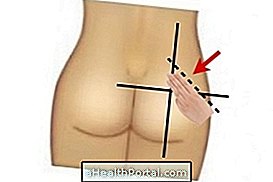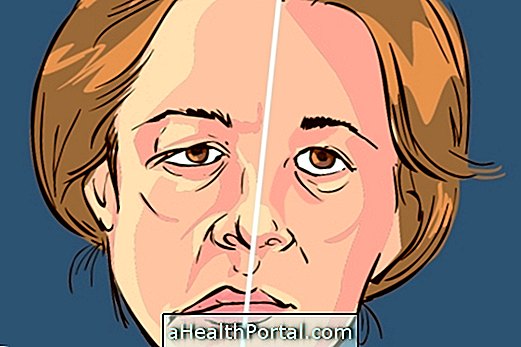To prevent the elderly from falling and a serious fracture occurs, it may be necessary to make some adjustments in the home, eliminating hazards and making the divisions safer. For this it is recommended to remove carpets or to place support bars in the bathroom, to facilitate the bath and the use of the toilet, for example.
It is important to adapt the house to the needs of the elderly because from the age of 70, walking difficulties can occur due to joint pain, lack of muscle mass or loss of balance, and difficulty in seeing or even being confused., so it is important to eliminate all the dangers of the interior and exterior of the home to make the environment safer.
The safest home for the elderly living is one that has only 1 level because it facilitates movement between all rooms and also the entrance and exit, reducing the risk of falls.

General adaptations in the house to avoid falls
Some of the adaptations that must be made in the home of the elderly include:
- Have spacious and spacious divisions, with few closets or potted plants, for example;
- Wire household appliances to the wall;
- Give preference to furniture without corner;
- Put anti-slip floors, especially in the kitchen and bathroom;
- Have the rooms well lit, choosing to have several light fixtures and curtains;
- Save most used personal items in easily accessible places, such as closets and drawers;
- Remove the rug from the floor of all divisions of the house, leaving only one outside the box;
- Attach wooden blocks to the floor that may be loose;
- Do not wax floors, or leave anything wet on the floor;
- Replace or repair unstable furniture;
- Avoid very low chairs and also very high or very low beds;
- Use easy-opening knobs, avoiding those that are round.
In the case of elderly people having stairs these should be low, and it is important to place handrails on both sides of the stairs, in addition to painting with a strong color the steps and put a non-slip floor to prevent the elderly from falling. However, in some cases, it may be necessary to put a lift up the stairs.
Bathroom fittings
The senior citizen's bathroom should be ample, not having carpets and having only a low cabinet with essential items such as towels and toiletries, for example.
You should opt for a shower instead of the bath, where you can enter a wheelchair, put a firm plastic seat, or install bars to support the elderly can hold during the shower.
Room fittings
The elderly room should have a bed with a firm mattress and in some cases it may be necessary to choose a bed with bars to avoid nighttime falls. The objects most used by the elderly, such as glasses, medicines or telephone, should also be always within reach, on the bedside table, for example. In addition, it is important that the room is well lit and should have a night-light on at night if the room is too dark.
Adaptations outside the house
The outside of the elderly person's home may also jeopardize their safety and lead the elderly person to fall or be injured and, therefore, due to:
- Repair broken walkways and garden steps;
- Clear paths and remove debris from leaves, pots or bin;
- Replace stairs with ramps with handrails;
- Remove electrical wires at transit locations;
- Do not wash the yard with laundry soap or detergent because it makes the floor more slippery.
It is important to emphasize that all these measures are a way to prevent the elderly from getting injured, avoiding fractures or head trauma, and adaptations should be made according to the possibilities of the elderly and the family.
To know other strategies to prevent the elderly from falling read: How to prevent falls in the elderly.























